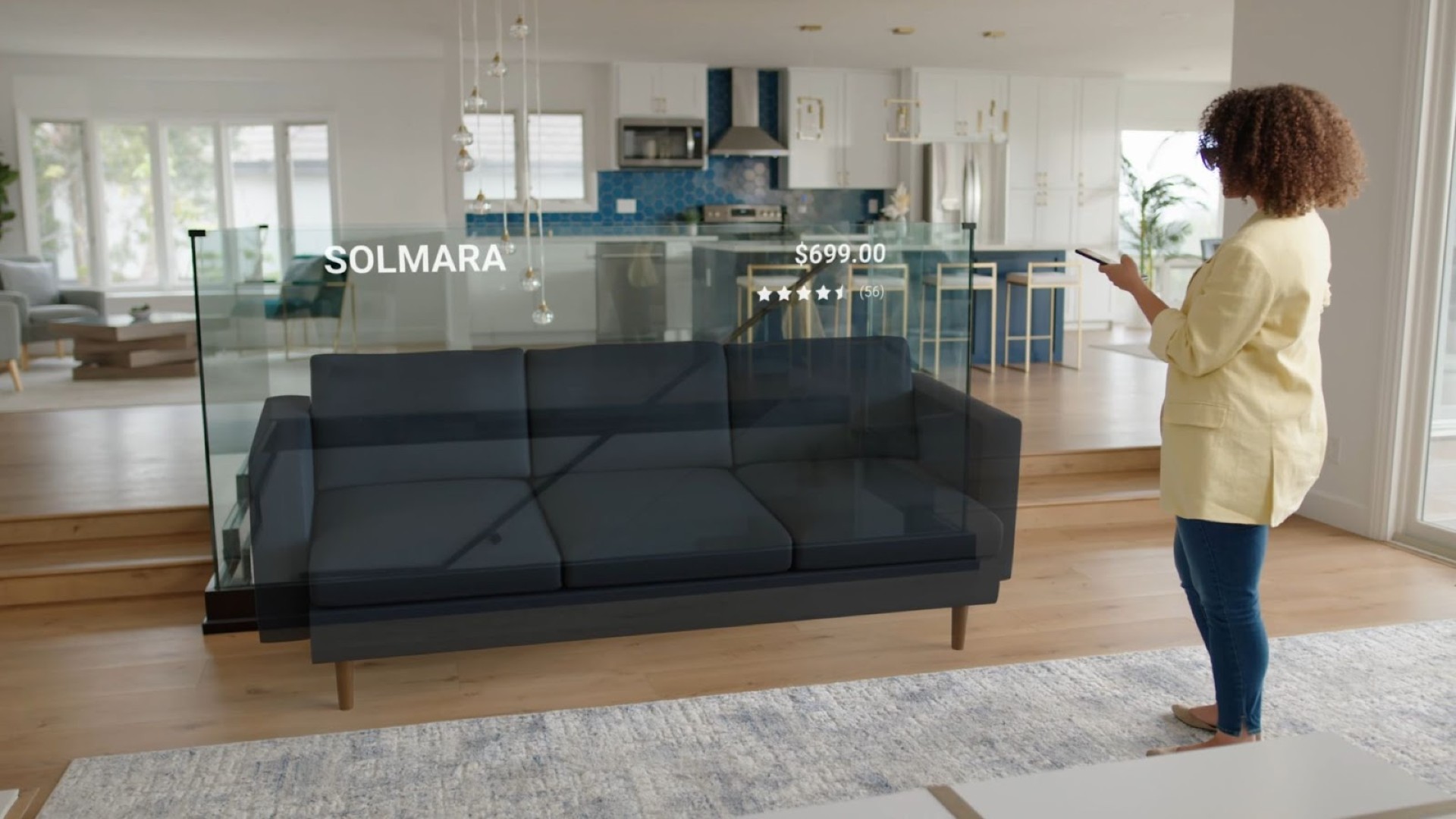Affiliate links on Android Authority may earn us a commission. Learn more.
Snapdragon Spaces brings us closer to ubiquitous Spatial Computing

For over a decade, we’ve relied on our smartphones to interact with the world around us. But if you’ve ever tried on a virtual reality (VR) headset or pair of augmented reality (AR) glasses, you probably already know how much more immersive they are than a flat display. The only problem? Fragmentation and limited app libraries. Case in point: even though you can choose from several headworn devices on the market today, many of them have walled ecosystems with few developers willing to enter.
To combat this problem and help bring XR to the mainstream, chipmaker Qualcomm Technologies, Inc. has decided to take a more hands-on approach. Instead of working behind closed doors with hardware partners, the company has opened up its software tools under the banner of Snapdragon Spaces™ XR Developer Platform to anyone that wants to create XR experiences on Android.
For developers, Snapdragon Spaces is a software development kit (SDK) that eliminates code overhead for many complex XR tasks like mapping environments, positional tracking, and surface detection. And from a user’s perspective, you can choose from different headsets knowing that Snapdragon Spaces will rely on your smartphone’s hardware to power any spatial apps you might want to use.
Put simply then, Snapdragon Spaces is helping make that all-important switch from using your smartphone’s 2D display to experiencing XR as seamless as possible.
Snapdragon Spaces and the allure of XR
You might be wondering why Qualcomm Technologies is making such a big deal about Snapdragon Spaces. After all, virtual and augmented reality technologies have been around for nearly a decade at this point. So, what’s different about Snapdragon Spaces?
Well, for starters, Qualcomm Technologies doesn’t believe in limiting augmented reality to a single display. Today, most AR experiences involve pointing a smartphone and its camera around your environment. However, even though that’s a great sampling of the technology, it’s not quite as immersive as a head-worn AR or VR device. For virtual reality developers, Snapdragon Spaces bring the convenience to build future-proof applications that will be compatible with a wide range of devices to come. And that’s exactly where Snapdragon Spaces shines.
With Snapdragon Spaces spatial technologies, a shopping app on your smartphone can easily add AR features to help visualize furniture around your room or visit a showroom in VR. By simply connecting a pair of lightweight AR glasses you’ll be able to see 3D models in full, true-to-life scale (pictured above). Not just that, positional tracking means you can walk around and physically move closer to the objects. Finally, support for hand tracking allows you to interact with these objects using intuitive finger-based gestures like swiping and pinching.
Needless to say, being able to see a life-sized rendition of objects and walk around them makes the experience more lifelike than just pointing a phone around the room. And that’s just scratching the surface of what Snapdragon Spaces has to offer, even if it’s one of the more exciting aspects.
With the Snapdragon Spaces, developers can easily add AR experiences to their existing Android apps, even if the latter was originally designed for 2D screens. Qualcomm Technologies offers the SDK for Unity and Unreal Engine, two of the most popular 3D engines available today. Snapdragon Spaces is also compatible with the OpenXR standard, meaning apps will work across several different XR devices with little to no porting effort required.
What can Snapdragon Spaces do for XR apps and developers?
Snapdragon Spaces is designed to make developers’ lives easier by providing core XR building blocks, so they don’t have to start from scratch. I’ve already touched upon a few aspects like hand tracking, but there’s a lot more than just that.
Positional tracking with six degrees of freedom (6DoF), for example, forms the basis of almost everything we do in AR. It allows developers to keep track of users as they walk around and rotate their heads, all without external trackers. Snapdragon Spaces 6DoF support means that AR experiences don’t have a practical limit to their size — they can span entire rooms or even outdoors.
Game studio Mohx-games used Snapdragon Spaces 6DoF tracking to create Soul Summoner, a Wizard-themed game with up to eight-person multiplayer. The game can be experienced in any physical setting, ranging from enclosed rooms to an open park. With AR glasses, players can move about in their physical space to dodge incoming spells and use hand tracking to cast spells and activate shields.
Beyond the scale and freedom aspects, Snapdragon Spaces also includes support for image and object recognition. Developers can use this feature to create AR experiences that react in response to objects in the real world. This is yet another complex task that developers can offload to Snapdragon Spaces to focus on the creative aspects instead.
More recently, Qualcomm Technologies debuted a new Snapdragon Spaces feature called Dual Render Fusion that decouples the phone’s display from the AR experience. So in effect, developers can create AR experiences as easily as adding a secondary camera view to their apps.
Freeing up the smartphone’s display means that its touchscreen can now be used as an input method. A compelling use case for this feature is using a phone’s touchscreen as a precise controller in AR games instead of solely relying on hand tracking.
Niantic has also demonstrated how Snapdragon Spaces spatial features can combine with a map-based visual positioning system (VPS) to enable immersive, world-scale experiences. Imagine wearing a pair of AR glasses outdoors with the ability to see objects, art, and markers left behind by other people.
Building with Snapdragon Spaces: A flourishing ecosystem
Qualcomm Technologies’ commitment to developing an open XR ecosystem extends to the Snapdragon Spaces Pathfinder Program, which also includes the company’s $100 million Metaverse Fund. Developers that qualify for the program receive “early access to platform technology, project funding, co-marketing and promotion, and hardware development kits” — all vital aspects considering the burgeoning state of the XR industry.
On the subject of developing for Snapdragon Spaces, Qualcomm Technologies currently utilizes Lenovo’s ThinkReality VRX All-in-one mixed reality headset and ThinkReality A3 glasses paired with Motorola Edge 30 Pro or Motorola Edge Plus smartphones as their Developer Kit. But we’re also seeing other manufacturers embrace the Snapdragon Spaces platform, with OPPO announcing its MR Glass headset and TCL joining in with its RayNeo X2 AR glasses.
Snapdragon Spaces has also garnered support from other key players. Android OEMs, game developers, content providers like Viacom CBS, network operators like T-Mobile and Docomo, and software partners like Epic Games’ Unreal Engine have all joined the ecosystem. All in all, thousands of developers have joined the Snapdragon Spaces effort.
Keeping all of that in mind then, it’s clear that Qualcomm Technologies is extremely well-positioned to solve the XR fragmentation problem and propel the technology forward. And as an early adopter, I couldn’t be more excited for the raw potential that Snapdragon Spaces already offers today.
Sponsored by Qualcomm Technologies, Inc.
Snapdragon Spaces is a product of Qualcomm Technologies, Inc. and/or its subsidiaries. Snapdragon Spaces Pathfinder is a program of Qualcomm Technologies, Inc. and/or its subsidiaries.

